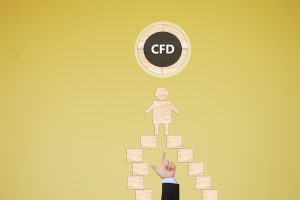 Confusingly, contracts for difference (or CFDs) and forex are sometimes spoken about interchangeably. While there are definite similarities in the way these are traded, most notably in that you do not own the underlying asset you are trading on but merely speculate on whether its price or value will move in a certain direction, the single biggest difference lies in what is actually being traded.
Confusingly, contracts for difference (or CFDs) and forex are sometimes spoken about interchangeably. While there are definite similarities in the way these are traded, most notably in that you do not own the underlying asset you are trading on but merely speculate on whether its price or value will move in a certain direction, the single biggest difference lies in what is actually being traded.
Working out the similarities
As we’ve just mentioned, the primary similarity between CFD trading and buying and selling forex, is that you don’t actually own what you ‘buy’.
In forex trading, you are speculating on the exchange rate moving up or down. For example, in a YEN/AUD transaction, you are not buying yen and selling Australian dollars. What you are doing instead, is speculating that interest rates will go in the direction you predicted – and if you’re right, you’ll be able to cash out a profit.
Similarly, let’s say you’re a CFD trader. You purchase a CFD contract on the Hong Kong Stock Exchange. You do not own any stocks you purchase on the stock market in Hong Kong. Remember, you’re not even putting down the money for the full price of the value of stocks in your contract – you’re putting down the equivalent of a ‘deposit’. You’re leveraging the rest and betting the price will go up or down, which is why it’s so risky. If you win, you win big, because you win in multiples of the full price, having only put down a fraction of it. But inversely if you lose, you’re doing so in the same epic proportions as well.
Because you can speculate on a wide range of things in CFDs such as commodities and not just stocks, but are confined to currency in CFDs, forex is often considered to be a kind of CFD.
Of course, there are other similarities a well. Both are OTC trades, or executed over the counter. They are also both done using the same base platforms, and use identical tools in the form of charts and pricing structures. The cost of trading in each case relates to the spread only, which is different from other types of trading where factors such as volume also influence the cost. Finally, it is also relatively simple in each case to enter and exit a market position easily.
Defining the differences
The fundamental difference between CFD and forex trading is that many different types of contracts are involved in CFD trading. These include markets as varied as minerals, energy and indices, as well as more sophisticated CFDs such as short-selling stock, while forex comes down to currency trading only. When you trade CFDs, you are free to choose contracts involving any currency or currencies, depending on the country of origin of the underlying asset. There can be mismatched increments in volume too. In forex trading, you trade currencies in similar chunks of volume.
Then, there are the factors that influence each of these two and how your trading strategies need to be adapted accordingly. Your plan for making and not losing money in CFDs will be different to your plan for not bleeding money on the forex market. As you learn CFDs you’ll find that certain defined factors have a bearing. These include changing business trends, commodity supply and demand and risk volatility. When it comes to forex, because this plays out on a global stage, the factors are global and can involve geography, politics, local economies and job data in addition to any number of extraneous factors.
At the end of the day, forex is more of a streamlined kind of CFD, so is easier to trade in a manner of speaking. CFDs involve high risk-taking that comes with expert knowledge, but the rewards can also be greater.